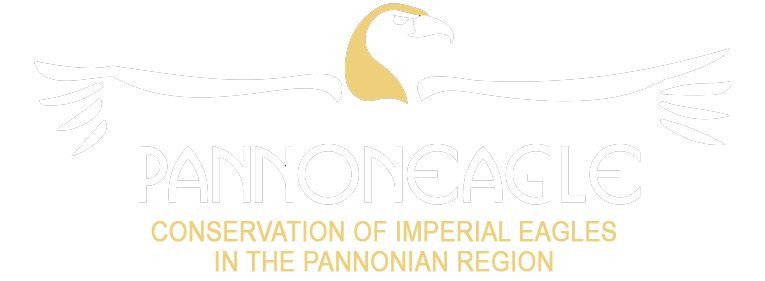Vulture killing hunters were caught
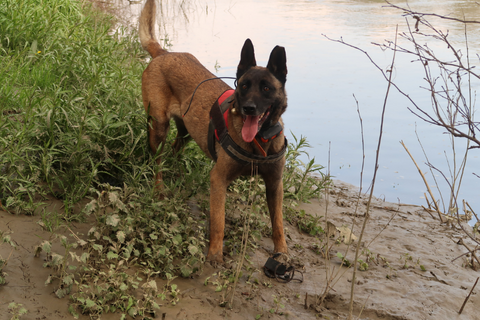
05.12.2022.
Prosecution brought charges against four hunters who killed strictly protected GPS tagged cinereous vulture and four common buzzards
In April 2021, public outrage peaked when a cinereous vulture was shot, which was only the third proven individual of the species in Hungary since 1932. Colleagues of the Bulgarian nature conservation organization Green Balkans alerted the poison and carcass detection canine unit of MME Birdlife Hungary because, based on the signs, something might have happened to a GPS tagged cinereous vulture. The repatriated vulture named "Ichera" arrived to Szabolcs-Szatmár-Bereg county via Serbia and Romania, where three days after its arrival, the GPS movement stopped at the bank of the Tisza river.
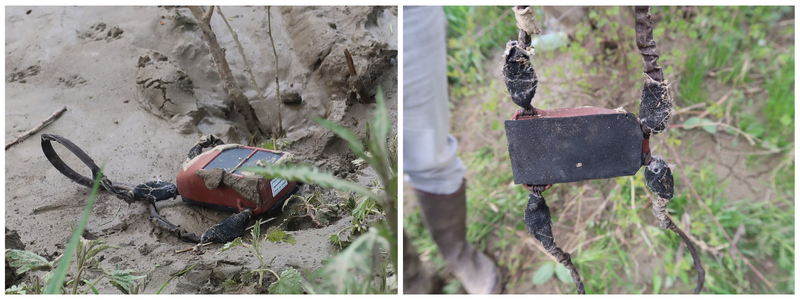
The GPS tag was found on the banks of theTisza river, along with the footprints of the vulture (Photos: Gábor Deák, BirdLife Hungary).
The canine unit of the MME and the ranger service of the Hortobágy National Park Directorate (HNPI) rushed to the specified coordinates within a few hours, where with the help of the Belgian shepherd named "Carlo" they managed to find the GPS tag, which had already been removed from the bird's back. After that, analyzing the previous data of the tracker, it was found that something happened to the bird in the territory of the Durbák Farm Hunting Association, near Szabolcsbáka settlement 10kms away. With the help of search dog, it was possible to find scattered feathers from and blood traces. Other findings also indicated that the vulture had been shot on site, so police were alerted immediately.
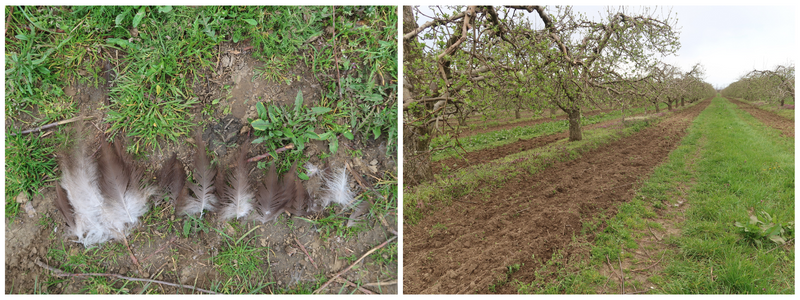
The scattered feathers were found with the help of the search dogs (Photos: Gábor Deák, BirdLife Hungary).
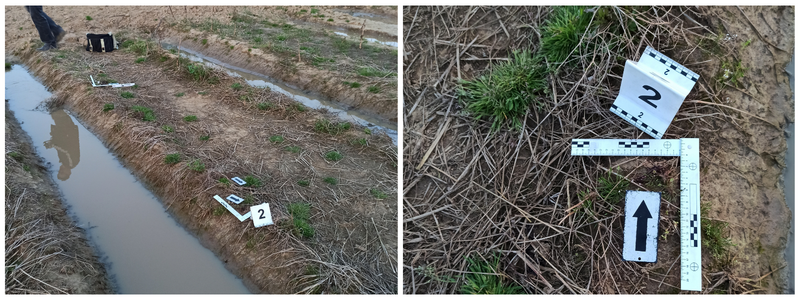
After the professional police investigation, the National Bureau of Investigation (NNI) took over the investigative work. In recent days MME was pleased to learn that the investigation was successfully concluded and the prosecution brought charges against the suspects . During the investigation, crime activities against other birds of prey were also revealed: at least four buzzards were trapped and killed near a pheasant and mallard farm.
The public prosecutor's office brought charges of nature destruction, as several protected species and one strictly protected species. Among the four perpetrators, the guest hunter from Kisvárda is charged with one crime, while the other defendants are charged with multiple crimes.
The cinereous vulture (Aegypius monachus) is one of the four vulture species native to Europe, which had become extinct in several countries - including Hungary - in the last two centuries due to illegal destruction (poisoning and shooting) and the reduction of natural habitats and food sources. It has the strictly protected status and a conservation value of HUF 250,000.
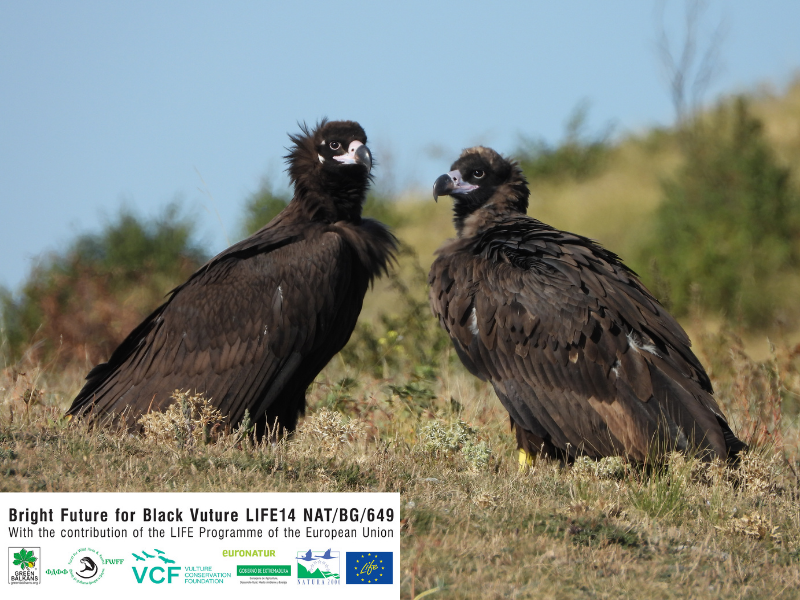
Cinereous vultures (Photo: Green Balkans).
The last known nesting in Bulgaria was in the 1950s and it was officially declared extinct in 1985. Within the framework of the Bright Future for Black Vulture (LIFE14NAT/BG/649, https://greenbalkans.org/VulturesBack/en/) conservation project, dozens of repatriated vultures were released in recent years, so the situation of the species began to improve significantly.
Simeon Marin from Green Balkans added the following:
„We are glad that this otherwise regrettable event ended with a successful prosecution. The reintroduction of these rare birds cost a lot of efforts: beginning with it rescue and rehabilitation by AMUS in Spain, followed by the donation by the Government of Andalusia, logistics and transport organized by VCF, work done by the Bulgarian team for the adaptation and release, and considering supplementary feeding provided by the Milvus Group NGO during the trip through Romania. It clearly shows that, with the help of international cooperation, we can act much more effectively against natural and human induced endangering factors affecting birds of prey.”
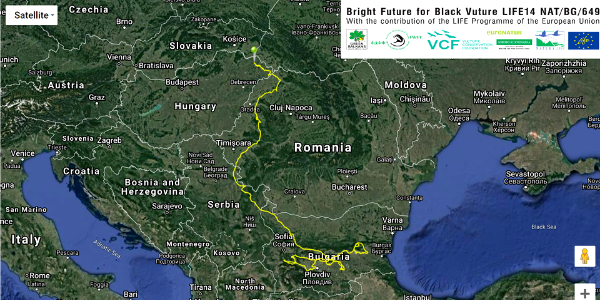
The route of the shot cinereous vulture (Source: Green Balkans).
The MME's poison and carcass detection canine unit works against the illegal destruction of birds of prey within the framework of the European Union-supported PannonEagle LIFE project
